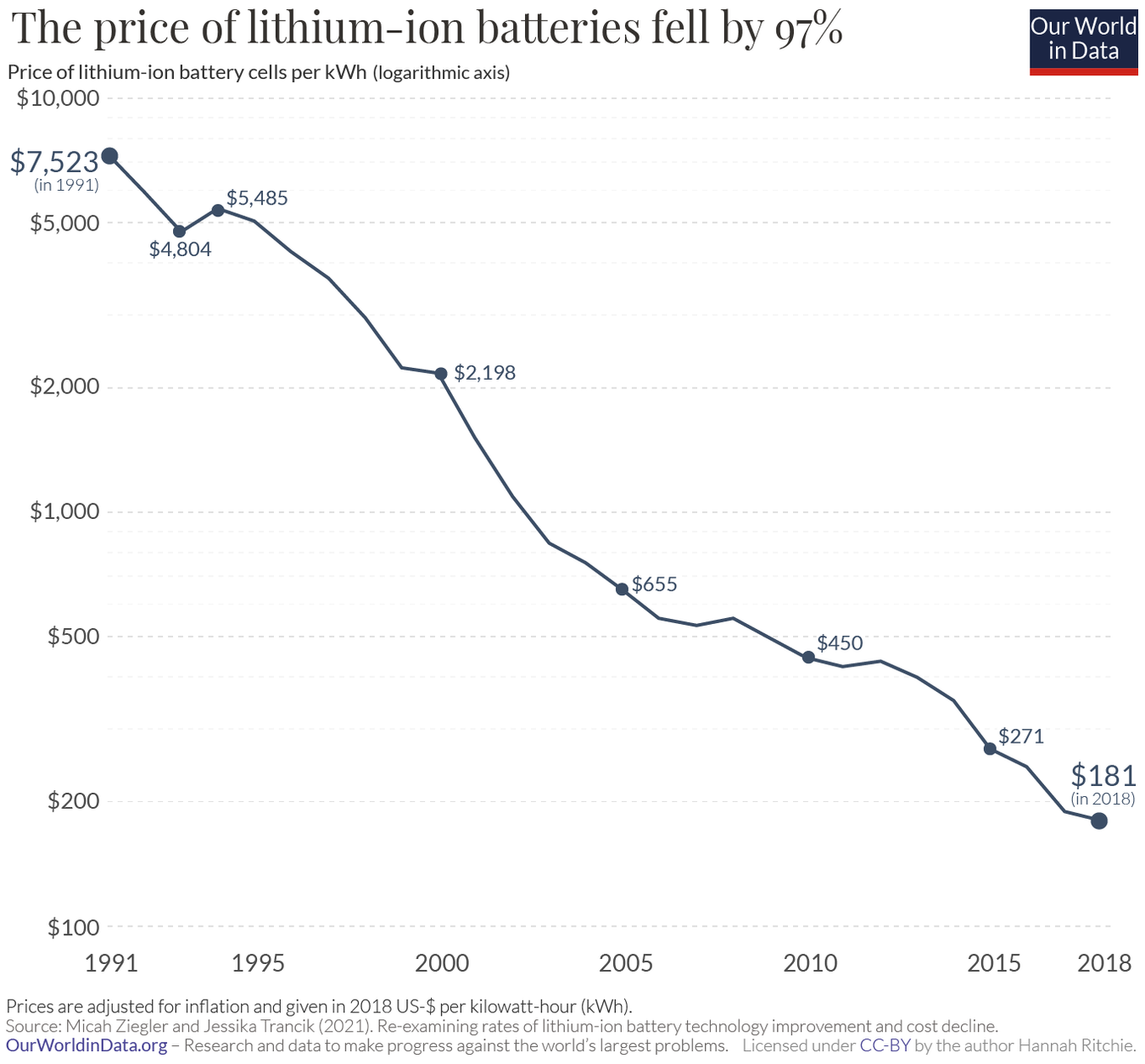1.2 – how are the climate and economy linked?
Modern economies are built on the use of fossil fuels. The burning of fossil fuels releases carbon dioxide into the atmosphere, which traps heat and causes global warming. The more fossil fuels we burn, the more carbon dioxide we release, and the more the climate changes.
sources of greenhouse gas emissions
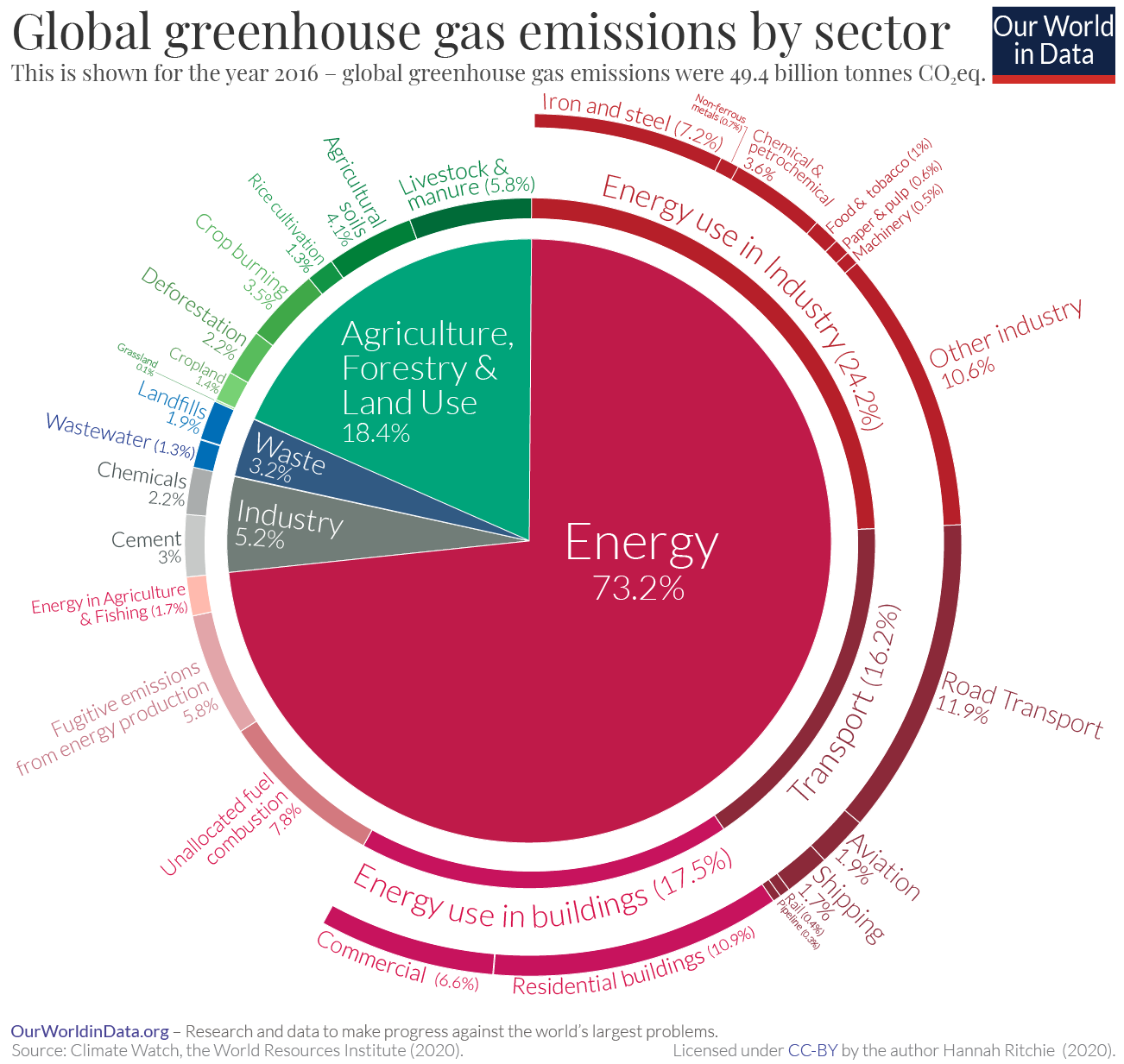
In the United States, the primary sources of greenhouse gas emissions are transportation (i.e., burning gasoline and diesel fuel in internal-combustion engine vehicles), electricity production (i.e., primarly burning coal and natural gas to generate electricity), emissions that arise from industrial, commercial, and residential activities, and agriculture (e.g., methane emissions from livestock).
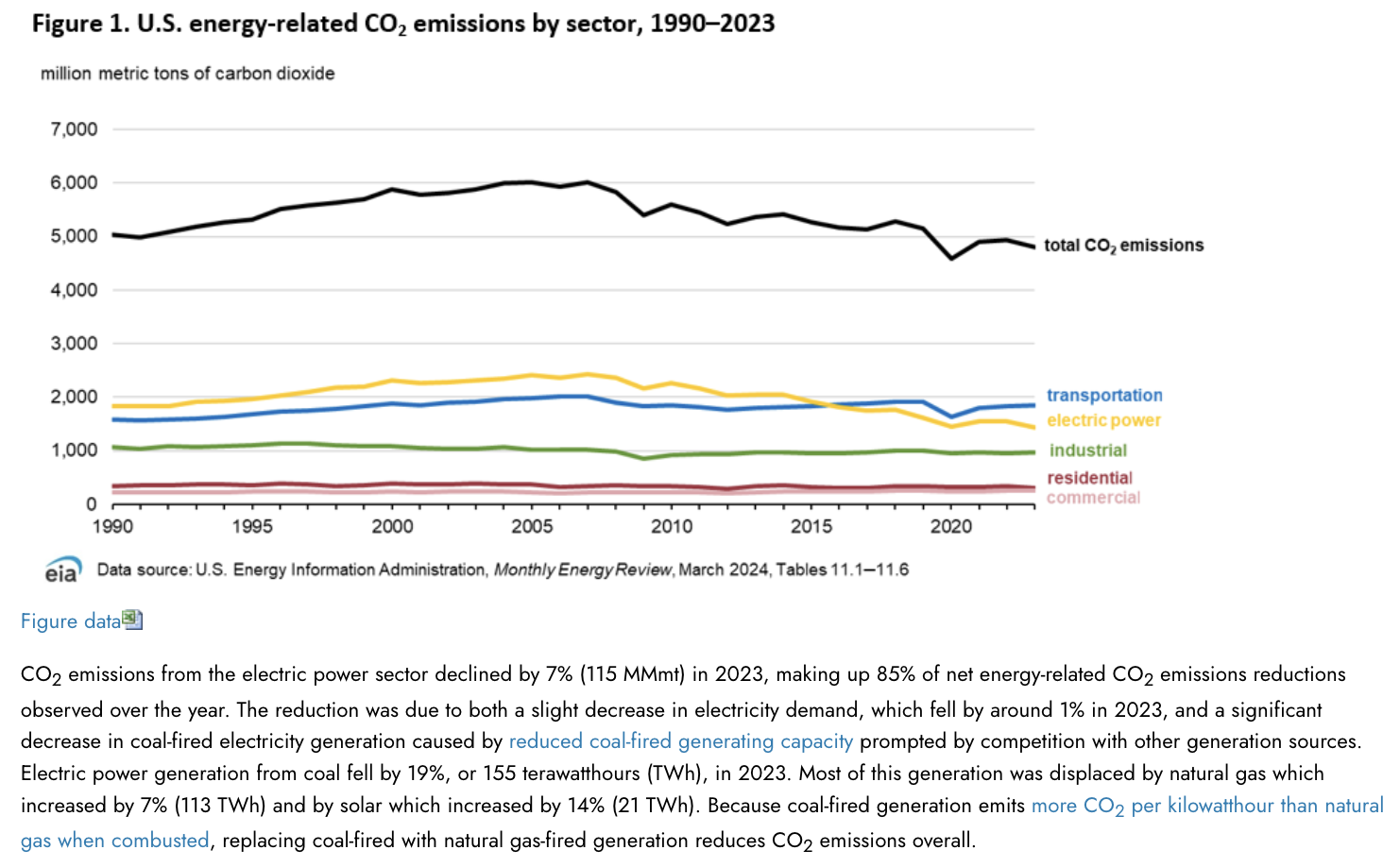
Figure Figure 1 shows that GHG emissions in the US have been declining since about 2007. Much of this trend was driven by the decline in emissions from electricity generation. Since around 2015,
electricity generation
In the US, electricity is predominantly generated by burning fossil fuels. See Figure 2 below for an example of how electricity is generated in Richard Scarry’s “Busytown.”
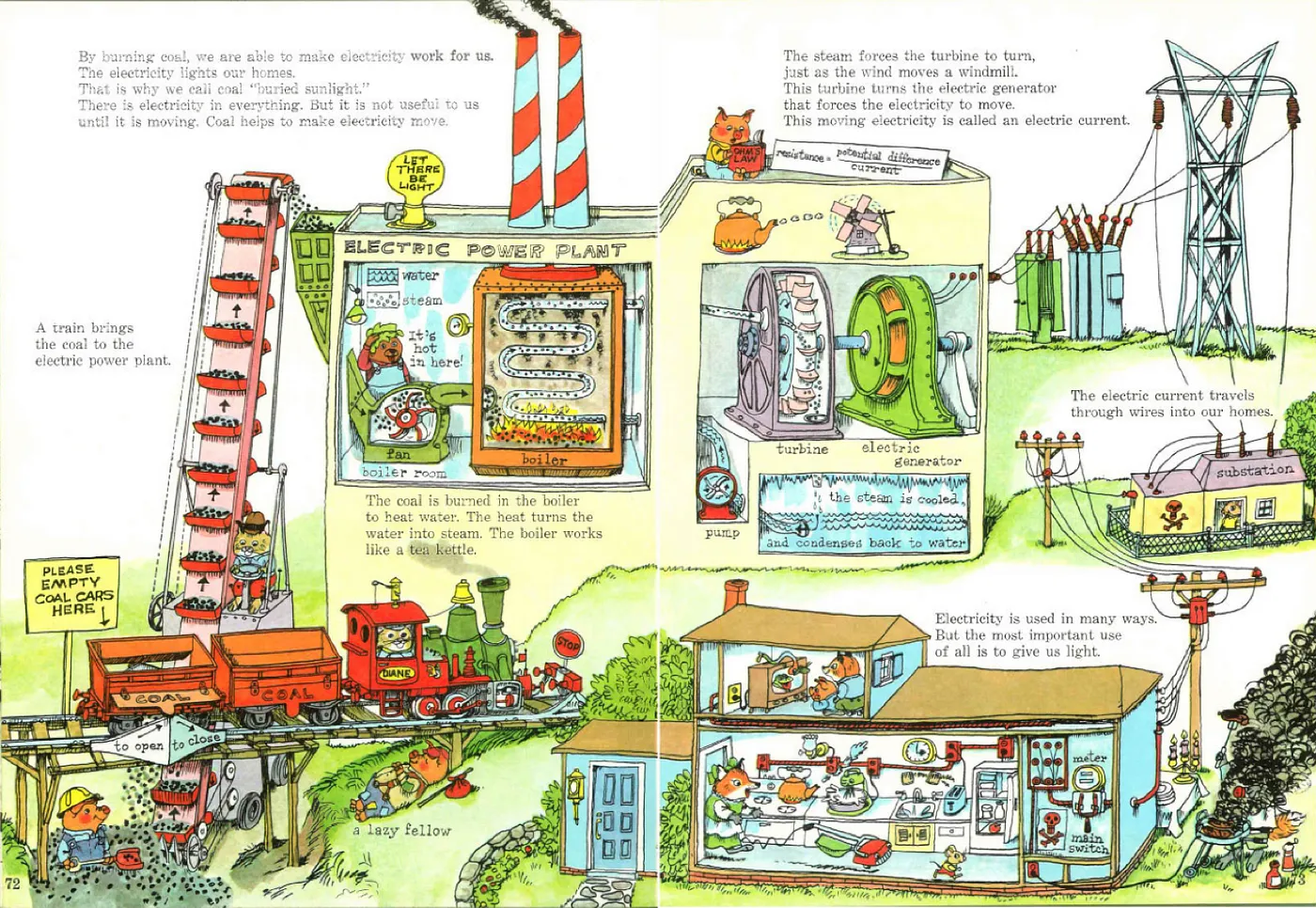
As shown in Figure 3, just under 60% of electricity was generated by coal and natural gas in 2023. Nuclear accounted for 18% of electricity generation, while renewable sources (e.g., wind, solar, hydro) accounted for about 22% of generation. Renewables and nuclear do not emit greenhouse gases when generating electricity.
In the late 2000s through the 2010s, the share of electricity produced from natural gas increase considerably. This rise was due primarily to the abundance of natural gas from hydraulic fracturing (i.e., fracking). Fracking is a method of extracting natural gas from shale rock formations that were previously inaccessible.
Two factors led to the dramatic reduction GHGs coming from the electricity sector. First, the shift from coal to natural gas has been a major driver of the decline in greenhouse gas emissions in the US, since natural gas emits less carbon dioxide per unit of energy produced than coal. Second, the rise of renewable energy sources, such as wind and solar, has also contributed to the decline in GHG emissions.
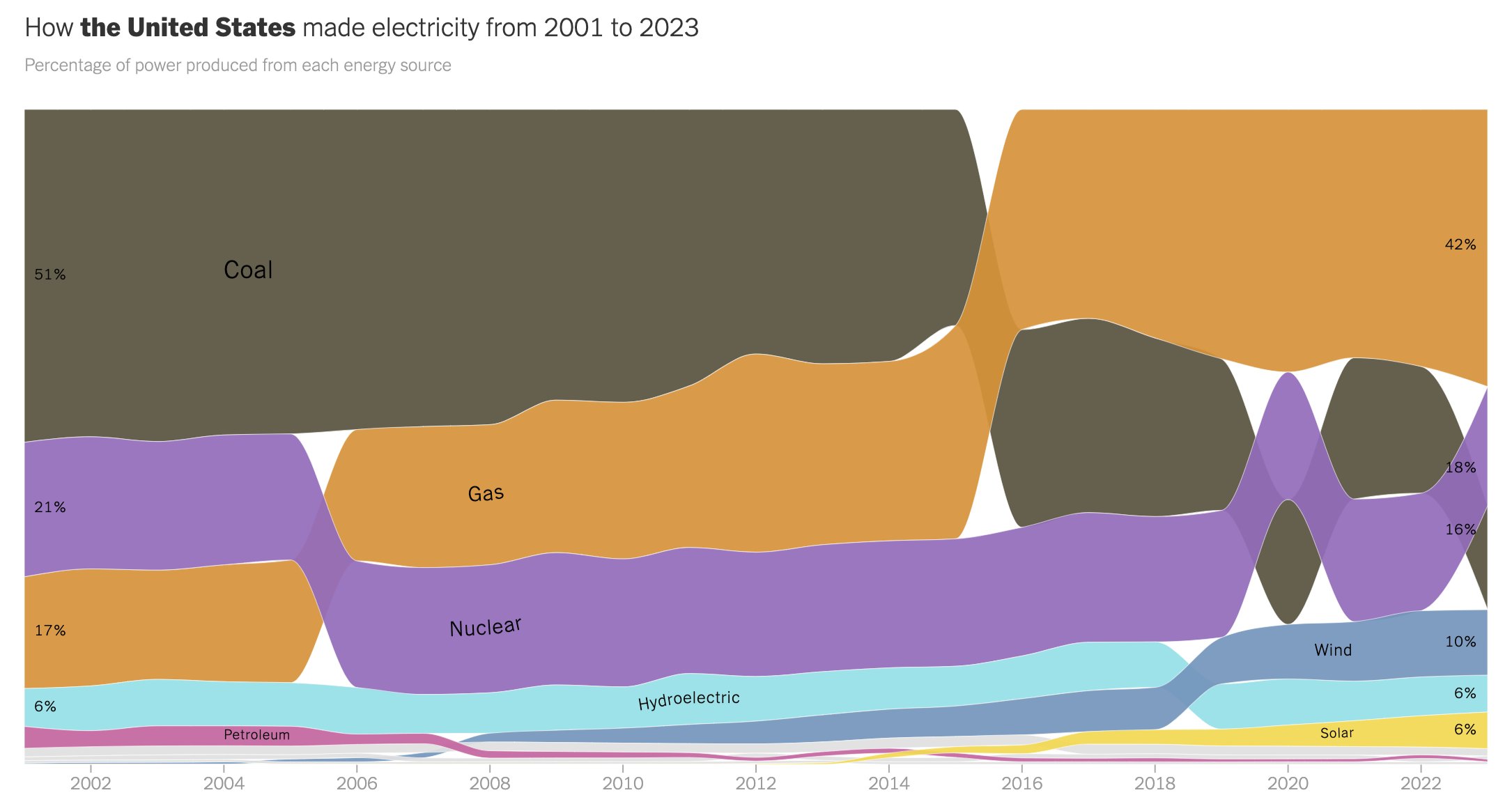
Although renewable electricity generation is growing rapidly, renewables face intermittency issues. We can only generate solar electricity when the sun is shining and we can only generate wind electricity when the wind is blowing. Without large-scale battery storage, renewables are not perfect substitutes for fossil fuels.
To demonstrate one problem with intermittency, consider Figure 4 that shows the electricity generation in California over a 24-hour period. The “duck curve” shows that solar electricity generation peaks in the middle of the day when the sun is shining. As the sun sets, solar electricity generation falls off, and other sources of electricity generation must be used to meet demand. This increase in demand is typically met by natural gas-fired power plants, which have have costly “ramping” costs. The duck curve also demonstrates a problem: if I wanted to build a solar plant, who would I sell my electricity to during the middle of the day? The high penetration of solar, combined with the lack of electricity storage, leads weakens the incentives to invest in more solar capacity.
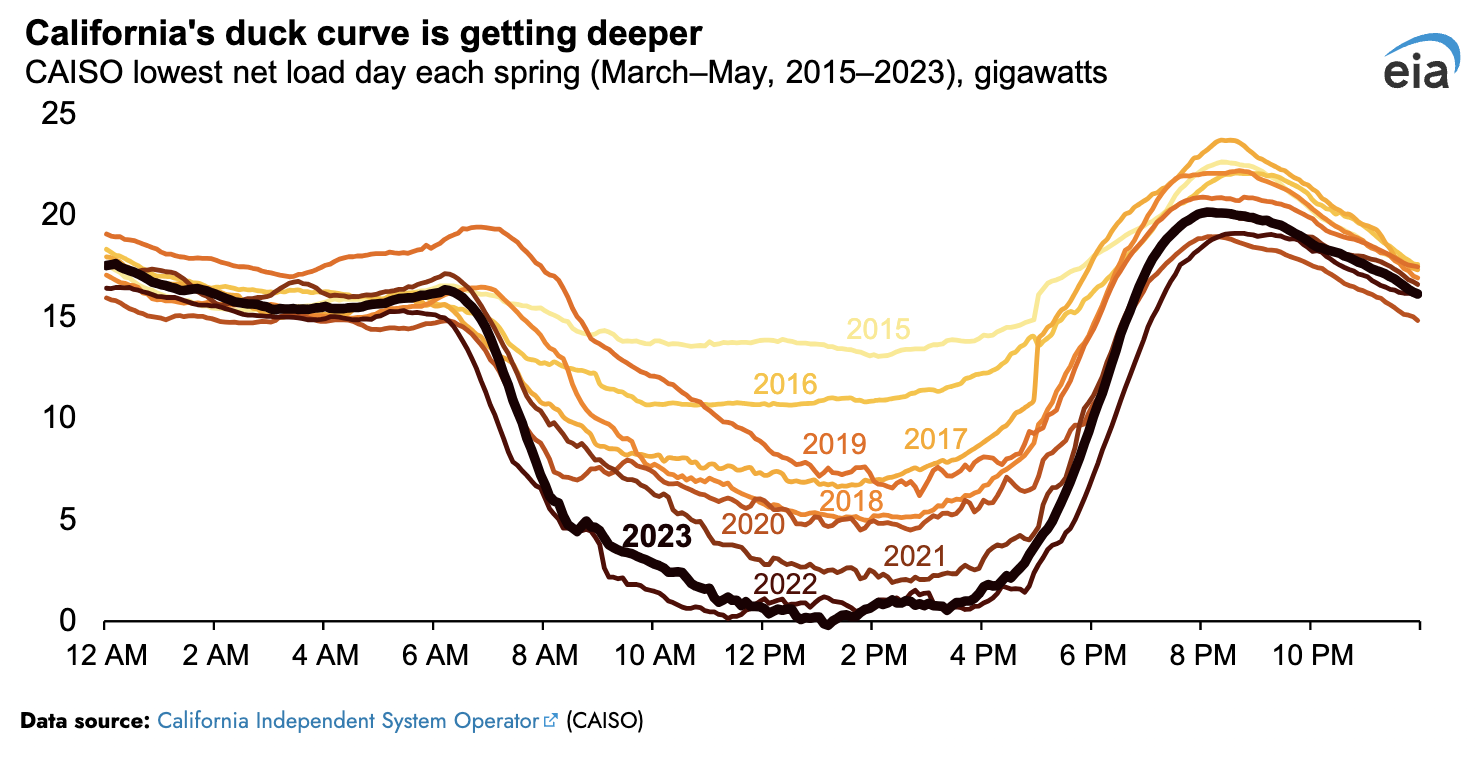
transportation
As shown in Figure 1, transportation is the biggest emitter of GHGs in the US. These emissions come largely through burning gasoline and diesel fuel. Over time, cars have become more fuel efficient and, more recently, a shift towards electric vehicles has accelerate. The shift towards electric vehicles is driven by a combination of government policy (e.g., tax credits for electric vehicles) and technological advancements (e.g., improvements in battery technology).
will we run out of fossil fuels?
Covert, Greenstone, and Knittel (2016) argue that we are probably not going to stop using fossil fuels anytime soon based on market incentives alone. They pose two theories and evaluate them.
The supply theory for getting of fossil fuels suggests that as we extract more fossil fuels, the cost of extraction will rise. This is because we will have extracted the easiest-to-reach reserves first. As the cost of extraction rises, the price of fossil fuels will rise, and we will use less of them. This will lead to a decrease in GHG emissions.
The demand theory for getting off fossil fuels suggests that as the cost of renewable energy sources (for electricity generation) and battery technology (for electric vehicles) falls, consumers will demand more of these technlogies, which are substitutes for conventional, fossil-fuel based technologies. This will lead to a shift outward in demand for low-GHG emissions technologies and a reduction in demand for high-GHG emissions technologies.
Renewable energy sources are becoming increasingly cost-competitive with fossil fuels. The levelized cost of electricity (LCOE) is a measure of the average net present cost of electricity generation for a generating plant over its lifetime. Figure 5 shows the LCOE for different energy sources. Due in part to massive technological improvements in PV technology, renewable energy sources, such as wind and solar, produce electricity more cheaply than conventional fossil fuel sources.

At the same time, technological advancement led to the development of hydraulic fracturing (i.e., fracking) and ability to access tar-sands oil which has made fossil fuels more abundant and, generally, cheaper. So, the same forces that drive down the cost of renewable energy sources are also driving down the cost of fossil fuels.
For battery technologies, technological advancements have also led to a notable decrease in the cost of batteries for electric vehciles. As shown in Figure 6, the cost of lithium-ion batteries has fallen by 90% over the 30 years. Nissan Leaf batteries (40 kwh battery) cost ~$7300 in 2018. In 1991, it would have cost $300,000. This has made electric vehicles more cost-competitive with internal combustion engine vehicles.
